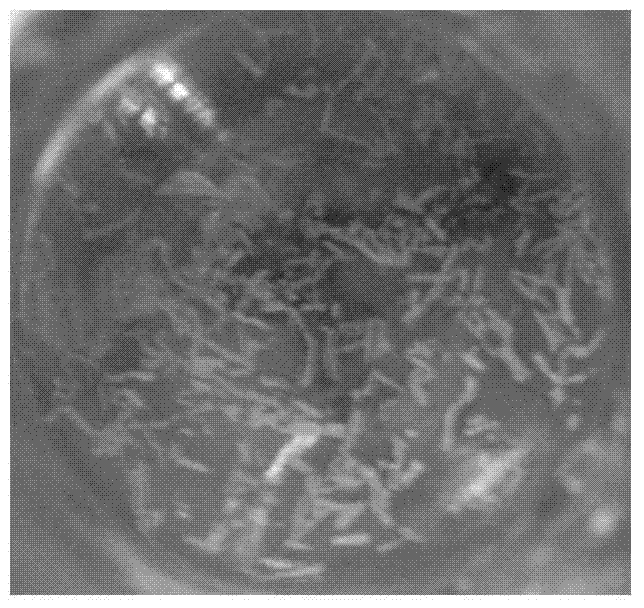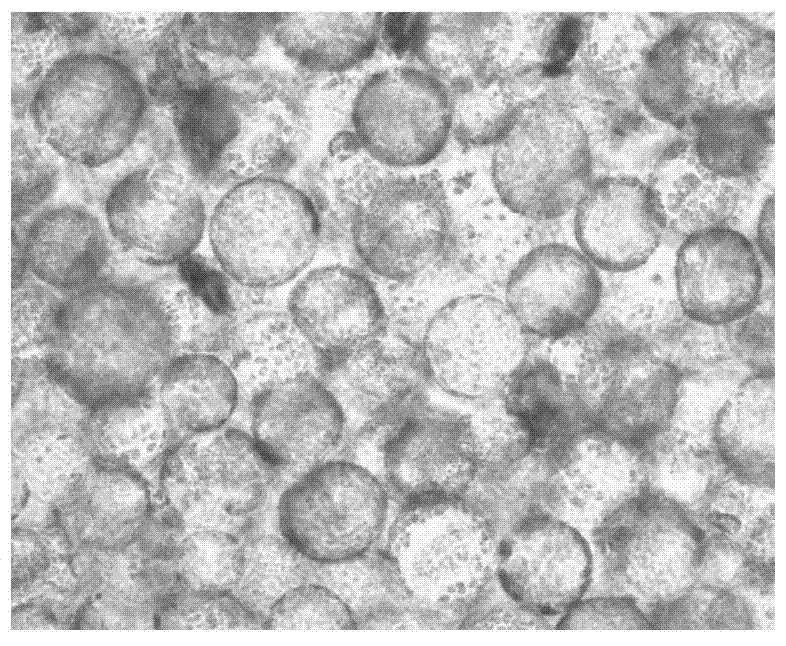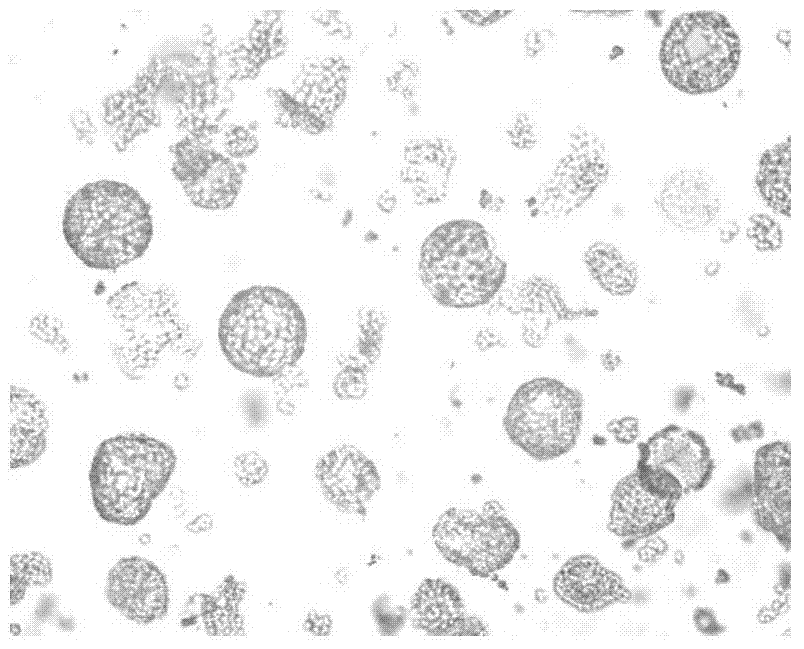Method for extraction of Crassulaceae plant cell vacuoles
A plant cell and Crassulaceae technology, applied to plant cells, etc., can solve the problems of inability to obtain complete and pure vacuoles, and low vacuole efficiency, and achieve the effect of large number of vacuoles, good integrity and high purity
- Summary
- Abstract
- Description
- Claims
- Application Information
AI Technical Summary
Problems solved by technology
Method used
Image
Examples
Embodiment 1
[0050] 1 solution preparation
[0051] (1) Cell lysate: 15g cellulase, 4g isolated enzyme, 72.88g mannitol, 1.49g potassium chloride, 4.264g morpholine ethanesulfonic acid monohydrate, 1.11g calcium chloride, 0.39065g β-mercaptoethanol, dissolved Dilute to 1L in ultrapure water;
[0052] (2) Protoplast protection solution: 0.1543g sodium chloride, 13.875g calcium chloride, 0.373g potassium chloride, 0.426g morpholinoethanesulfonic acid monohydrate, dissolved in ultrapure water and dilute to 1L;
[0053] (3) Protoplast lysate: 0.083g mannitol, 0.173g ethylene glycol bis-2-aminoethyl ether (EGTA), 0.559g 3-[(3-cholesterolaminopropyl)dimethylamino]-1-propane Sulfonic acid (CHAPS), 3.876g morpholineethanesulfonic acid monohydrate, 12.614g calcium chloride, 0.339g potassium chloride, dissolved in 950mL ultrapure water, adjusted to pH 8.0 with 2M Tris solution, and then dilute to 1L;
[0054] (4) Vacuole protection solution: 4.264g morpholineethanesulfonic acid monohydrate, 145.7...
Embodiment 2
[0077] Utilize the same method and reagents as in Example 1 to carry out vacuole extraction, but add 7% polysucrose solution to the bottom of the centrifuge tube when purifying the vacuole, carry out density gradient centrifugation, and take the transition layer between the resuspension and 7% polysucrose solution (not A clear pink layer is formed) liquid microscope examination, the results of the microscope examination are shown in Figure 6 .
[0078] Depend on Figure 6 It can be seen that there are only a few red vacuoles with transparent edges, most of which are protoplasts or vacuoles with ruptured protoplast membranes adhered to the surface, and the degree of vacuole purification is not high.
Embodiment 3
[0080] Utilize the same method and reagents as in Example 1 to carry out vacuole extraction, but add 4% polysucrose solution to the bottom of the centrifuge tube when purifying the vacuole, carry out density gradient centrifugation, and take the transition layer between the resuspension and 4% polysucrose solution (the layer is very inconspicuous) liquid microscopic examination, the results of microscopic examination are shown in Figure 7 .
[0081] Figure 7 In the medium, only protoplasts or vacuoles with ruptured protoplast membranes adhered to the surface were seen, and no red vacuoles with transparent edges were seen.
PUM
 Login to View More
Login to View More Abstract
Description
Claims
Application Information
 Login to View More
Login to View More - R&D
- Intellectual Property
- Life Sciences
- Materials
- Tech Scout
- Unparalleled Data Quality
- Higher Quality Content
- 60% Fewer Hallucinations
Browse by: Latest US Patents, China's latest patents, Technical Efficacy Thesaurus, Application Domain, Technology Topic, Popular Technical Reports.
© 2025 PatSnap. All rights reserved.Legal|Privacy policy|Modern Slavery Act Transparency Statement|Sitemap|About US| Contact US: help@patsnap.com



